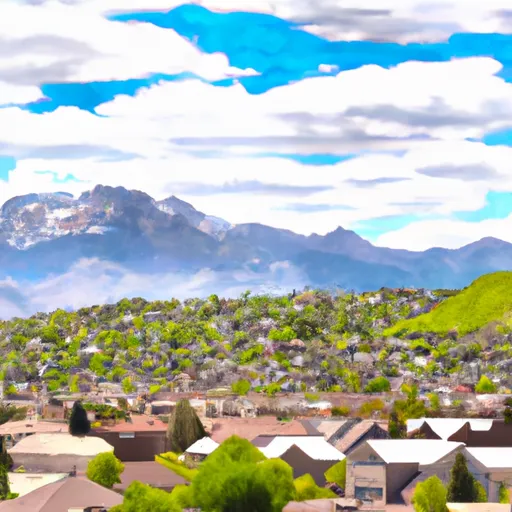-
 Snoflo Premium
Snoflo Premium
Get unlimited access to all our content
With no Ad interruptions! - Start Your Free Trial Login with existing account
Summit
Eden Index
Climate
8.8
•
Recreation
6.3
•
Community
•
Safeguard
5.7/10

Summit, Utah is a picturesque mountain town located in the northeastern part of the state. Known for its stunning natural beauty, Summit experiences a cool and refreshing climate. Summers are mild with average temperatures ranging from the low 70s to mid-80s Fahrenheit, while winters are cold, with temperatures often dropping below freezing. The town receives ample snowfall, making it a popular destination for winter sports enthusiasts.
Summit is blessed with abundant freshwater resources, thanks to its proximity to several rivers and streams. Hydrology constituents in the area include the Weber River, which provides opportunities for fishing, rafting, and kayaking. The nearby Mirror Lake and Rockport Reservoir also offer excellent fishing and boating opportunities.
Outdoor recreation is a major draw for visitors to Summit. The town is surrounded by vast wilderness areas and national forests, such as the Uinta-Wasatch-Cache National Forest. Hiking, camping, mountain biking, and wildlife viewing are popular activities in these areas. Additionally, Summit is home to several ski resorts, offering premier downhill skiing, snowboarding, and cross-country skiing opportunities during the winter months.
Overall, Summit, Utah is a haven for outdoor enthusiasts, offering a diverse range of recreational activities in a stunning natural setting.
What is the Eden Index?
The Snoflo Eden Index serves as a comprehensive rating system for regions, evaluating their desirability through a holistic assessment of climate health, outdoor recreation opportunities, and natural disaster risk, acknowledging the profound impact of these factors on livability and well-being.
Climate Health Indicator (CHI): 8.8
Summit receives approximately
312mm of rain per year,
with humidity levels near 64%
and air temperatures averaging around
10°C.
Summit has a plant hardyness factor of
6, meaning
plants and agriculture in this region thrive during a short period during spring and early summer. Most
plants will die off during the colder winter months.
By considering the ideal temperature range, reliable water supplies, clean air, and stable seasonal rain or snowpacks, the Climate Health Indicator (CHI) underscores the significance of a healthy climate as the foundation for quality living.
A healthy climate is paramount for ensuring a high quality of life and livability in a region, fostering both physical well-being and environmental harmony. This can be characterized by ideal temperatures, reliable access to water supplies, clean air, and consistent seasonal rain or snowpacks.
Weather Forecast
Streamflow Conditions
Escalante Desert-Sevier Lake
Area Rivers
Escalante Desert-Sevier Lake
Snowpack Depths
Escalante Desert-Sevier Lake
Reservoir Storage Capacity
Escalante Desert-Sevier Lake
Groundwater Levels
Recreational Opportunity Index (ROI): 6.3
The Recreational Opportunity Index (ROI) recognizes the value of outdoor recreational options, such as parks, hiking trails, camping sites, and fishing spots, while acknowledging that climate plays a pivotal role in ensuring the comfort and consistency of these experiences.
Access to outdoor recreational opportunities, encompassing activities such as parks, hiking, camping, and fishing, is crucial for overall well-being, and the climate plays a pivotal role in enabling and enhancing these experiences, ensuring that individuals can engage in nature-based activities comfortably and consistently.
Camping Areas
| Campground | Campsites | Reservations | Toilets | Showers | Elevation |
|---|---|---|---|---|---|
| Minersville State Park | 29 | 5,523 ft | |||
| Lava Point - Zion National Park | 6 | 7,811 ft | |||
| Navajo Lake | 15 | 9,107 ft | |||
| Te - Ah | 41 | 9,189 ft | |||
| Parowan Gap Petroglyphs Dispersed | None | 5,551 ft | |||
| Point Supreme - Cedar Breaks National Monument | 30 | 10,280 ft | |||
| Cedar Canyon | 18 | 8,444 ft |
Nearby Ski Areas
Catastrophe Safeguard Index (CSI):
The Catastrophe Safeguard Index (CSI) recognizes that natural disaster risk, encompassing floods, fires, hurricanes, and tornadoes, can drastically affect safety and the overall appeal of an area.
The level of natural disaster risk in a region significantly affects safety and the overall livability, with climate change amplifying these risks by potentially increasing the frequency and intensity of events like floods, fires, hurricanes, and tornadoes, thereby posing substantial challenges to community resilience and well-being.
Community Resilience Indicator (CRI):
The Community Resilience Indicator (CRI) recognizes that education, healthcare, and socioeconomics are crucial to the well-being of a region. The CRI acknowledges the profound impact of these elements on residents' overall quality of life. By evaluating educational resources, healthcare accessibility, and economic inclusivity, the index captures the essential aspects that contribute to a thriving community, fostering resident satisfaction, equity, and social cohesion.

